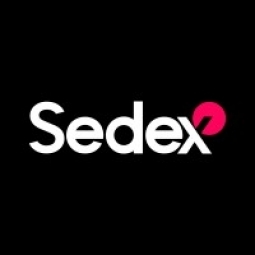技术
- 分析与建模 - 计算机视觉软件
适用行业
- 食品与饮料
- 国家安全与国防
适用功能
- 物流运输
用例
- 供应链可见性(SCV)
- 篡改检测
关于客户
家乐氏公司是一家跨国食品制造公司,总部位于美国密歇根州巴特尔克里克。该公司生产谷物和方便食品,包括饼干、薄脆饼干、烤面包糕点、谷物棒、水果味零食、冷冻华夫饼和素食食品。该公司的品牌包括玉米片、磨砂片、脆米花、Special K、品客薯片等。家乐氏公司拥有一个多世纪的历史,业务遍及全球 180 多个国家。该公司的全球供应链高级副总裁 Alistair Hirst 已在家乐氏公司的供应链领域工作了 32 年,足迹遍布四大洲。
挑战
家乐氏公司是食品行业的全球领导者,在 VUCA(不稳定、不确定、复杂和模糊)世界中管理其供应链可持续性方面面临着重大挑战。该公司的全球供应链高级副总裁 Alistair Hirst 指出了影响其全球供应链稳定性、风险和可持续性的四个关键挑战。其中包括政治不稳定、气候变化、粮食安全和城市化。战争和社会经济失衡等政治不稳定正在很大程度上影响公司的采购和可持续性。气候变化正在改变世界种植地区,对公司的粮食生产构成威胁。食品安全是一个主要问题,特别是在该公司希望扩大业务的发展中市场。最后,到2050年,城市化预计将使世界人口增加到90亿,其中70%生活在城市地区,从而增加对粮食的需求,而资源仍然有限。
解决方案
为了应对这些挑战,家乐氏公司与位于加利福尼亚州的未来研究所合作,制定了在 VUCA 世界中进行管理的战略。该战略包括对公司方向有清晰的认识,了解实现目标的路径,目标明确,以及应对长期或短期供应冲击的敏捷性。为了解决政治不稳定问题,公司必须制定强有力的政策和计划。为了应对气候变化的影响,该公司旨在增强其供应链的弹性并预测增长地区的变化。为了确保粮食安全,该公司计划涉足商业领域,让人们从自给农业转向商业经济作物。为了解决城市化问题,该公司旨在通过强有力的可持续发展议程改善留在土地上的人们的粮食安全并提高生产力。
运营影响

Case Study missing?
Start adding your own!
Register with your work email and create a new case study profile for your business.
相关案例.

Case Study
The Kellogg Company
Kellogg keeps a close eye on its trade spend, analyzing large volumes of data and running complex simulations to predict which promotional activities will be the most effective. Kellogg needed to decrease the trade spend but its traditional relational database on premises could not keep up with the pace of demand.

Case Study
HEINEKEN Uses the Cloud to Reach 10.5 Million Consumers
For 2012 campaign, the Bond promotion, it planned to launch the campaign at the same time everywhere on the planet. That created unprecedented challenges for HEINEKEN—nowhere more so than in its technology operation. The primary digital content for the campaign was a 100-megabyte movie that had to play flawlessly for millions of viewers worldwide. After all, Bond never fails. No one was going to tolerate a technology failure that might bruise his brand.Previously, HEINEKEN had supported digital media at its outsourced datacenter. But that datacenter lacked the computing resources HEINEKEN needed, and building them—especially to support peak traffic that would total millions of simultaneous hits—would have been both time-consuming and expensive. Nor would it have provided the geographic reach that HEINEKEN needed to minimize latency worldwide.

Case Study
Energy Management System at Sugar Industry
The company wanted to use the information from the system to claim under the renewable energy certificate scheme. The benefit to the company under the renewable energy certificates is Rs 75 million a year. To enable the above, an end-to-end solution for load monitoring, consumption monitoring, online data monitoring, automatic meter data acquisition which can be exported to SAP and other applications is required.

Case Study
Coca Cola Swaziland Conco Case Study
Coco Cola Swaziland, South Africa would like to find a solution that would enable the following results: - Reduce energy consumption by 20% in one year. - Formulate a series of strategic initiatives that would enlist the commitment of corporate management and create employee awareness while helping meet departmental targets and investing in tools that assist with energy management. - Formulate a series of tactical initiatives that would optimize energy usage on the shop floor. These would include charging forklifts and running cold rooms only during off-peak periods, running the dust extractors only during working hours and basing lights and air-conditioning on someone’s presence. - Increase visibility into the factory and other processes. - Enable limited, non-intrusive control functions for certain processes.

Case Study
Temperature Monitoring for Restaurant Food Storage
When it came to implementing a solution, Mr. Nesbitt had an idea of what functionality that he wanted. Although not mandated by Health Canada, Mr. Nesbitt wanted to ensure quality control issues met the highest possible standards as part of his commitment to top-of-class food services. This wish list included an easy-to use temperature-monitoring system that could provide a visible display of the temperatures of all of his refrigerators and freezers, including historical information so that he could review the performance of his equipment. It also had to provide alert notification (but email alerts and SMS text message alerts) to alert key staff in the event that a cooling system was exceeding pre-set warning limits.

Case Study
Coca-Cola Refreshments, U.S.
Coca-Cola Refreshments owns and manages Coca-Cola branded refrigerators in retail establishments. Legacy systems were used to locate equipment information by logging onto multiple servers which took up to 8 hours to update information on 30-40 units. The company had no overall visibility into equipment status or maintenance history.



